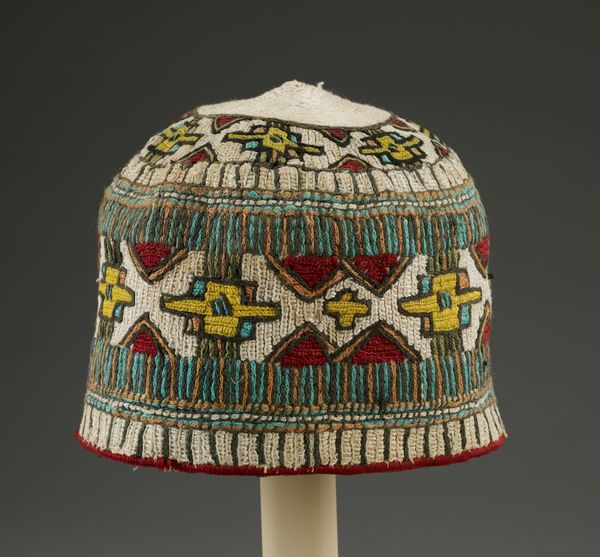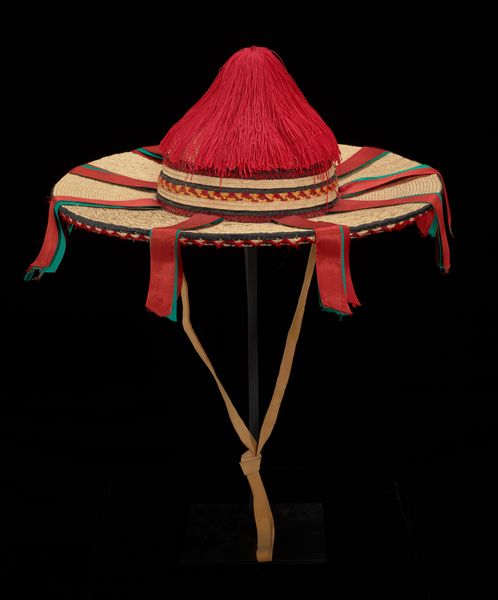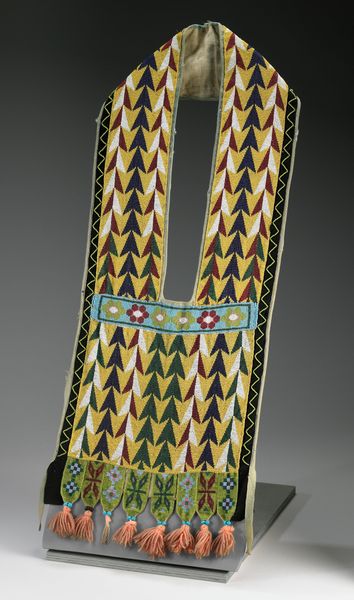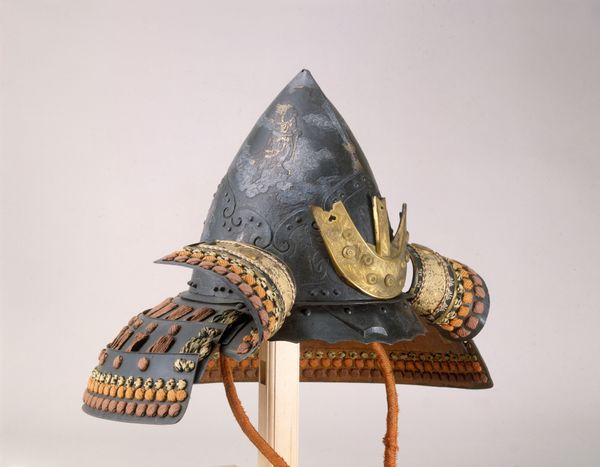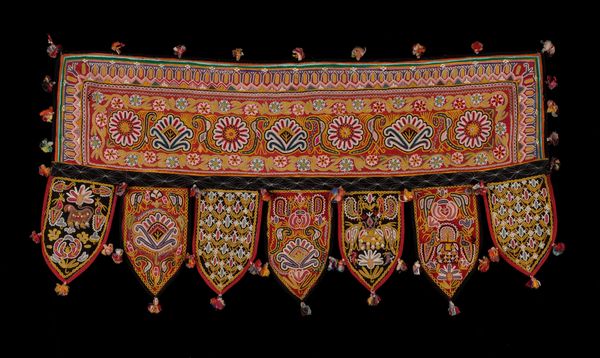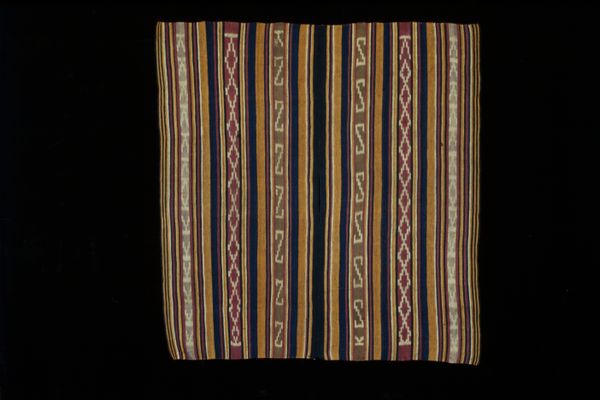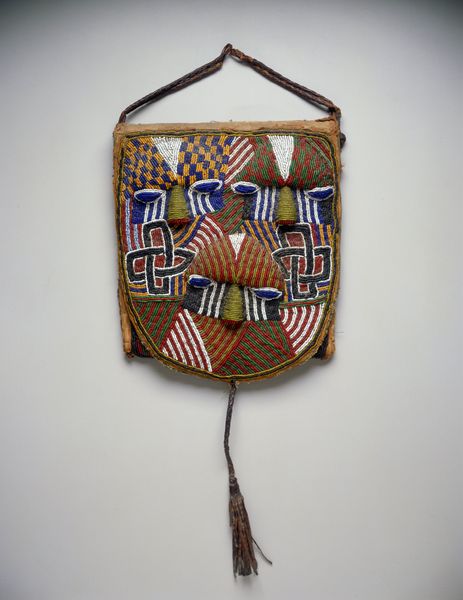
textile
#
african-art
#
textile
#
folk-art
#
beaded
#
decorative-art
Dimensions: 12 1/2 x 15 3/4 x 6 3/4 in. (31.75 x 40.01 x 17.15 cm)
Copyright: Public Domain
Curator: Here we have a captivating object simply titled "Hat." Unfortunately, the artist and precise date are unknown, but it resides in the Minneapolis Institute of Art and appears to be rooted in African textile traditions. Editor: My first impression is how festive and celebratory this feels. It’s so meticulously crafted—and surprisingly vibrant. There's a playful geometry at work with all the colorful beadwork. Curator: Exactly. Considering it as textile folk art gives us a window into communal artistry, where patterns and colors could be interwoven with societal stories or individual expression through decorative art practices. We must acknowledge this item’s production as work that embodies particular aesthetic and economic values, challenging that high-art/craft distinction, especially regarding accessibility of resources and cultural meanings it conveys. Editor: I can almost hear the rhythmic click of beads during the making process; it feels incredibly labor-intensive! What are your thoughts about the repetitive nature of decorative beadwork? Is it a kind of meditation for the artisan or does that romanticize it? Curator: I believe the rhythmic repetition you observed connects closely to meditative and time-consuming labour of women, who frequently turn daily acts into innovative art practices. Looking closely, notice its form. Its geometry in these shapes and how it might function as symbolic language in African art is compelling, indicating some hierarchical meaning; this is all culturally and socially encoded, of course. We could ponder who might wear it and in what contexts, from ceremonial uses to more informal displays of social stature. Editor: True. Thinking of headwear and adornment…it's transformative! When I look at it, the vibrant colors pop but the small embellishments evoke the cosmos! Even more impressive when remembering its pure functionality. Curator: Thinking about its role materially lets you enter that culturally situated creative domain, which, I imagine, leads back around to those cosmological narratives. What kind of impact do you imagine we are having as interpreters ourselves here at this intersection in time? Editor: Perhaps the beauty is less about definitive statements than an ongoing engagement. For me it becomes something entirely new within my consciousness! Curator: Very eloquently said, actually! We hope our reflections offer insights that help listeners come closer toward this captivating object as part of greater human activity around it through making itself.
Comments
No comments
Be the first to comment and join the conversation on the ultimate creative platform.


